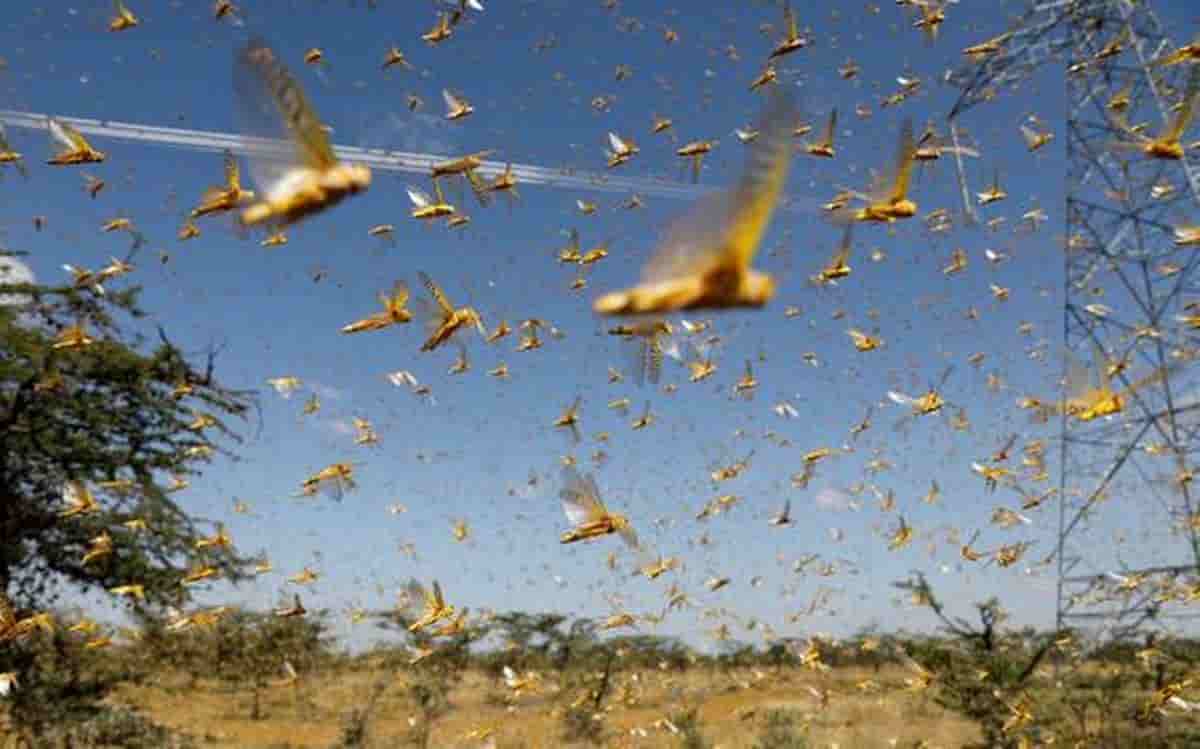
Locusts are a type of grasshoppers who can damage lots of crops in India
Standing vegetables and crops in at least 5 states across the country is facing a major threat as swarms of locusts are reported in huge number, a month before their scheduled arrival. Last week, the Environment Ministry of India warned in a statement saying that locust swarms have entered Punjab, Rajasthan, Haryana and Madhya Pradesh. The statement said that Rajasthan is the most affected state and the locusts have entered the country earlier than they were expected to arrive.
Uttar Pradesh has also reported some attacks on crops by the Locusts. An alert for Maharashtra and Delhi has also been issued. The United Nations acknowledged the threat and warned that armies of locusts swarming across continent possess an impeccable threat to the agriculture of India this year.
What are locusts?
Locusts, the oldest migratory pests, are a group of short-horned grasshoppers that multiply in numbers as they migrate long distances in destructive swarms (up to 150km in one day).
The swarms devour fruits, seeds, leaves, flowers, bark and growing points, and also destroy plants by their sheer weight as they descend on them in huge numbers.
Four species of locusts are found in India: Bombay Locust (Nomadacris succincta), Migratory locust (Locusta migratoria), Desert locust (Schistocerca gregaria) and Tree locust (Anacridium sp.).
The desert locust is regarded as one of the most destructive pests in the country as well as globally. A small swarm covering one square kilometer can consume the same amount of food in one day as 35,000 humans.
Read more: #अरनब_की_लग_गई trends on Twitter, we are like memers are too creative
What kind of damage can locusts cause?
Locusts are polyphagous, which means they can feed on a wide variety of crops. Locusts have the ability to multiply rapidly. A single female desert locust lays around 60 to 80 eggs three times during its roughly 90-day life cycle. K L Gurjar, deputy director of Locust Warning organization, estimates that a 1-square-km area can accommodate around 40 to 80 million of these insects, making the growth of their swarms exponential quite like global pandemic coronavirus. The potential damage of these insects has been limited in India only because the country hosts only one breeding season. In Iran, Pakistan and East Africa, they also multiply during January-June.
Experts believe that the recent outbreak of these locusts across the India-Pakistan border may have been driven by the change in weather. Frequent cyclones in the Indian Ocean and a longer-than-usual monsoon across the region could be the reason for the recent outbreak of locusts.
How the government is dealing with it?
Authorities across the concerned states have stepped up the vigil and deployed drones to detect the movement of the locust army. The government has also held tlks with Pakistan to minimize the damage. Pakistan border is the most likely-gateway for an invasion by locusts.
Have a news story, an interesting write-up or simply a suggestion? Write to us at info@oneworldnews.com








